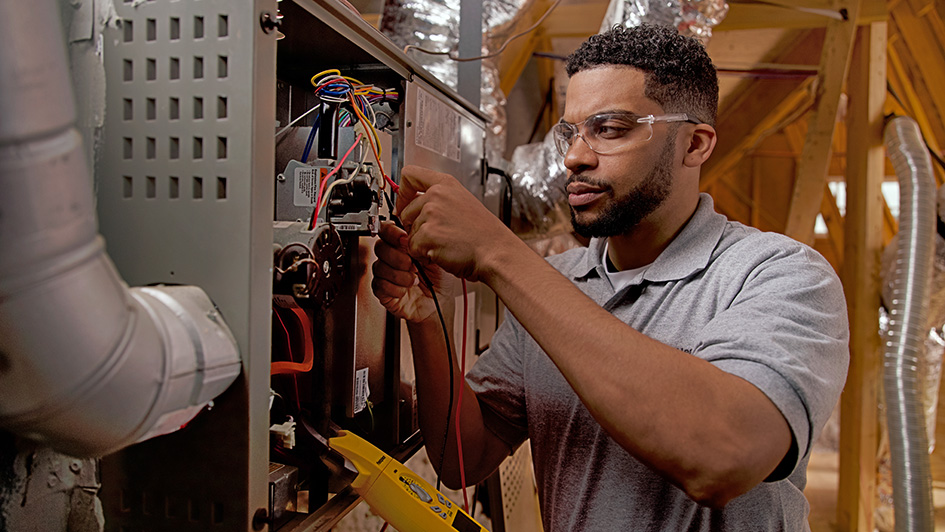
A furnace is almost always a background player for your home, helping keep you warm during the cold winter months. It often won't be noticed until something goes wrong.
One source may be that your furnace has a cracked heat exchanger. It can be a safety risk, so it’s important to know the symptoms of a cracked heat exchanger and what to do if you believe that is the problem.
What Is a Heat Exchanger in a Furnace?
A heat exchanger helps transition heat from the combustion chamber inside your furnace to the air that moves through the ventilation. It usually handles this via coils or tubes that warm the air while acting as a barrier to keep gas formed in the combustion chamber, called flue gasses, from leaking out into your home.
Is a Cracked Heat Exchanger Dangerous?
Given its central role, it shouldn't come as a surprise that a cracked heat exchanger can be very dangerous. Cracks in the heat exchanger can permit dangerous gasses – like carbon monoxide, which can be lethal – to circulate across your home.
For this reason, never turn on your furnace if you believe it has a cracked heat exchanger, as this could make the whole household sick. Call an HVAC professional as soon as possible if you are worried your heating has a cracked heat exchanger that should be repaired.
Four Signs of a Cracked Heat Exchanger:
- Furnace turns off: A cracked heat exchanger may cause your furnace to switch off.
- Odd Smells: If the air escaping your furnace has a powerful chemical odor, it could be an indicator that gas is seeping through cracks in your heat exchanger. These byproducts, which may smell like formaldehyde, are a major warning sign.
- Carbon monoxide alarm goes off or you notice health problems: If a cracked heat exchanger is relieving carbon monoxide into your home, your carbon monoxide alarm should go off or household members might experience signs of carbon monoxide poisoning. Symptoms include headaches, dizziness, weakness, nausea, vomiting or feeling drowsy. If your alarm goes off or you feel unwell, exit the home immediately and then call for help.
- Soot: If you see black sooty buildup around the exterior of your furnace, it’s more evidence something might be seriously wrong.
What to Do if Your Furnace Heat Exchanger is Cracked
If you suspect your furnace has a cracked heat exchanger, call a pro with extensive experience in furnace installation Frederick as soon as possible so they can take a look at your system and, if needed, handle a furnace heat exchanger replacement. Costs often vary depending on the situation, but estimates can roughly suggest $1,000 to $3,000.
Estimates aside, the good news is that heat exchangers are generally protected by the warranty. It's a good idea to check the warranty paperwork on your furnace, since while the warranty may not cover the entire cost of repairs, it could significantly reduce your bill.
How to Avoid a Cracked Heat Exchanger in Your Home
One of the best ways to avoid problems in your furnace overall is via consistent furnace maintenance. Furnaces work the best when they work efficiently. Contacting a trained professional to check your furnace for worn-out parts, clogs in the air filters and other likely problems can help you avoid getting a big bill later on.
It’s also helpful to inspect your furnace filters every few months – it’s recommended some filters be replaced every 90 days or sooner if they are dirty or grimy. While the filters aren't a part of the heat exchanger itself, the strain of pulling air through a clogged filter makes the entire furnace work harder to complete its job. And the harder your furnace works, the more wear and tear pieces like the heat exchanger will sustain.
